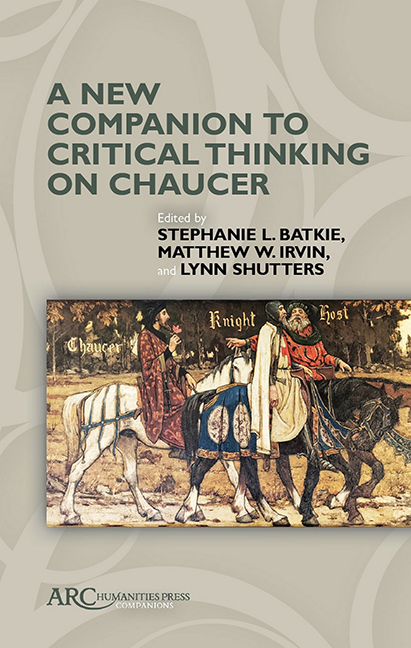Book contents
Consent/Assent
Published online by Cambridge University Press: 21 October 2021
Summary
General Prologue
Knight's Tale
Man of Law's Tale
Clerk's Tale
Parson's Tale
Physician's Tale
Troilus and Criseyde
CONSENT IS AN extraordinarily flexible and powerful concept, in Chaucer's day and in our own. In Chaucer's usage, as in ours, consent is the linchpin at the centre of legal, moral, and philosophical theories about how agreements are made and enforced. Assent, consent's more overtly affirmative cousin, often overlaps in meaning; but where there is a distinction, “assent” is used to describe how agreements are enacted or otherwise invoked. For the purposes of this essay I will treat them as near-synonyms, since that is how Chaucer uses them.
One reason consent is so pervasive in medieval writings is that it is used to explain how decisions are made (or assumed to have been made) on so many levels, and frequently jumps scales. Consent may be used to describe how the faculties of the soul work together to produce a decision within the self, as for example when the will consents to the reason. Between persons, consent ratifies and enforces contracts such as marriage and apprenticeship. Across the body politic of the realm as a whole, with the ruler as its head, consent to the ruler is often assumed, but sometimes in jeopardy. But of course, consent between a person's faculties can also be an allegory for persons negotiating a contract, and vice versa, and either can be a metaphor for any larger interaction between persons within a social body. Consent pervasively jumps scales in this way in part because despite its centrality in moral psychology, law, and political theory, it functions very poorly as a means for negotiating agreements and disagreements. When we attempt to describe how persons arrive at decisions and apportion culpability for them in terms of consent, our metaphors collapse. Consider, for example, this conventional explanation for sin from Chaucer's Parson's Tale, in which an individual's faculties are represented by Adam and Eve:
- Type
- Chapter
- Information
- A New Companion to Critical Thinking on Chaucer , pp. 27 - 42Publisher: Amsterdam University PressPrint publication year: 2021



